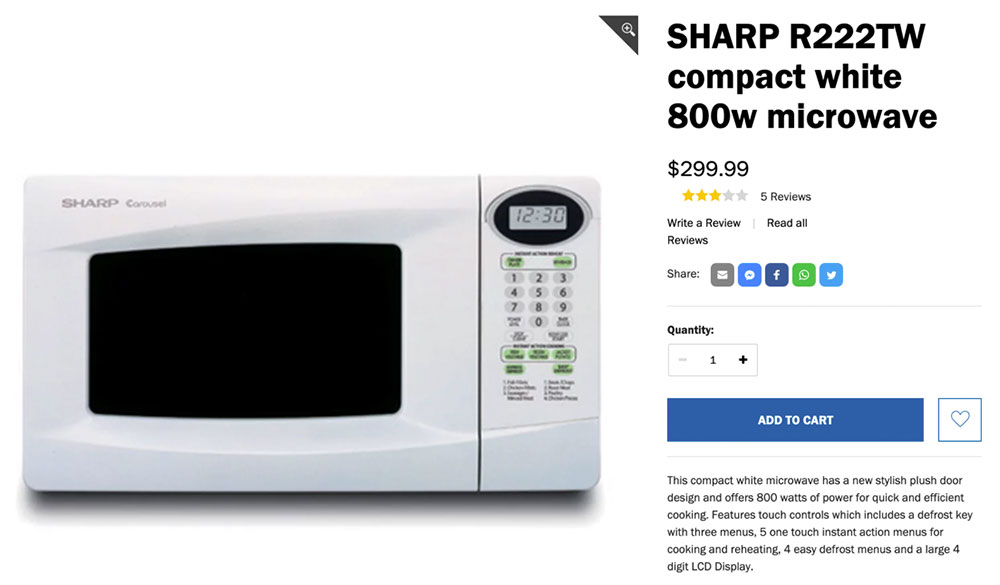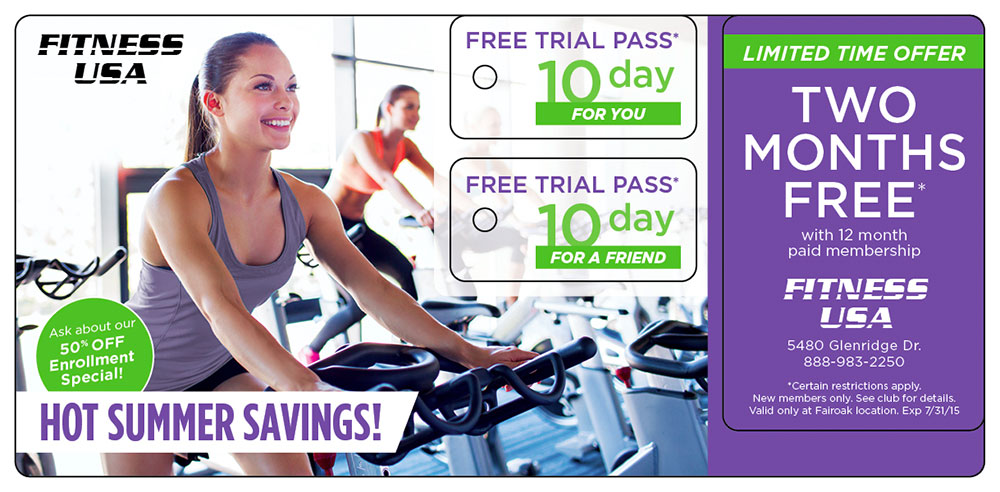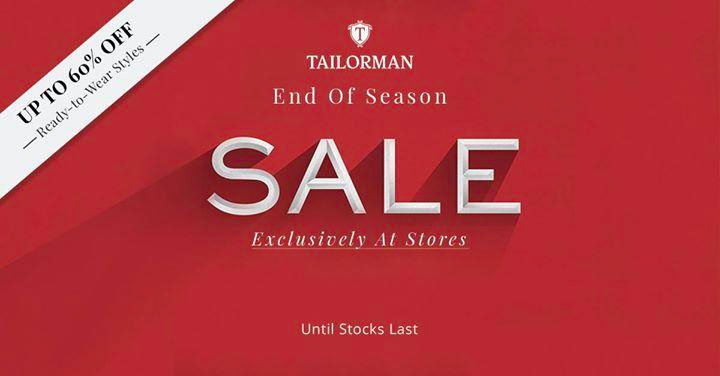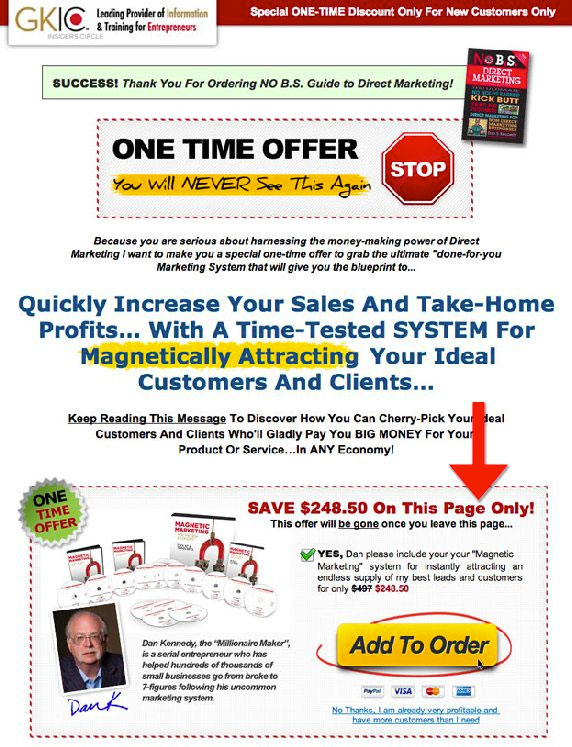In the 1972 movie “The Godfather”, there’s a scene where Don Corleone is asked for help to convince a Hollywood director that this friend of the family should get a role in his next movie. “Don’t worry about it” he says, “I’ll make him an offer he can’t refuse”.
This has become known in marketing circles as a “Mafia Offer”. An offer so good that you can’t refuse. In the movie, the Don’s offer was revealed when the director woke up with a severed horse’s head in his bed. His friend got the part. While this is a little more extreme example it highlights a very important aspect of your marketing… A highly convincing offer will make a huge difference to your marketing campaign.
The right offer is something that is good for your audience. It removes friction and all possible objections to the sale. It’s something people actually want. It’s at a great price and it’s structured in a way to make people think buying it is a no-brainer.
Creating the right offer can double or quadruple your response. It can also half your response if the offer is not good. The better your offer is, the easier it will make the job of marketing.
The Marketing Process Starts With Your Offer
Creating An Offer That Motivates People to Act
Your service or product is only a piece of your complete offer. Think about your offer in terms of selling a dream come true experience for your customers. What can you provide that can help remove any resistance to getting started?
Your offer should give people a reason, an incentive, and an opportunity to try your product, service, or business for themselves. Look at your product or service, and determine what possible objections prospects would have about getting started. Think from the perspective of your prospect, and remove anything that may slow you down.
If someone wants what you’re selling, the thing that stands in their way is fear. And if you remove the fear, they will buy.Gary Halbert
- What do I need to say?
- How does this need to be packaged?
- How does this need to be communicated?
How To Construct A Great Offer
11 Types Of Offers
1. Hard Offer – Payment Upfront
This is what you’ll see in 99% of commerce. It’s a straightforward approach. This is what you get. This is what it will do for you. This is what it costs, so buy it now.
This type of offer is the least compelling and usually the least effective of all of these options. It is the plain vanilla, standard run-of-the-mill offer, that the average business uses.
2. Soft Offer – Payment Later
The bulk of the price is transferred to later on after you have experienced the benefit. This can be in the form of pay nothing now and pay in 30 days if you love it. Or in the form of paying $1 today and in 30 days pay the remaining $99 if you love it.
It’s called soft because it’s easier to accept upfront if the prospect doesn’t have to pay anything right away, so they’re not risking anything
A soft offer will almost always outperform a hard offer.
3. Negative Option Offer – Continuity
It’s also known as forced continuity. This is where people buy something and they get a subscription that goes with what they bought. Maybe they buy a set of fitness DVDs and they get an automatic subscription to a DVD of the month club or they buy a nutritional supplement and they get a 30 day supply sent to them once a month. Customers are billed until they say to stop.
If you’re going to do this type of offer you need to make it obvious to the customer they are signing up for a subscription. And also make it easy for them to cancel their subscription. Otherwise, you’ll get a lot of angry and upset complaints.
Here’s a great example of how to do it the right way.
4. Installment Offer – Payment Plan
This is where the main price is broken down into a series of payments over a number of months. This makes it easier to sell higher ticket items because people don’t have to pay all at once upfront. It’s often used to make the price more palatable for items like furniture, fridges, TVs, etc.
Credit options like “Pay later” or “Laybuy” are now offered by all big-box retailers. These offers are designed to generate a quick decision. The old saying “strike while the iron is hot” comes to mind.
The majority of people will spend more when given an instalment option instead of real cash upfront. Credit for many people doesn’t feel like real money.
5. Charter Offer – Early One-Time Discount
6. Exclusive Offer – Offer For Certain People Only
7. Limited Supply Offer – Scarcity-Driven Offer
This refers to a limited quantity of units or positions available. For example, a blinds manufacturer may offer a discount on a certain range of fabric that they will not be reordering. The offer will last until the fabric range is sold out.
If something is perceived to be in limited supply, it’s more appealing. That’s certainly the case in the collectables market.
8. Limited-Time Offer – Deadline-Driven Offer
This offer is available for a specific amount of time. You can offer the same product for limited periods of time. For example, an online class may be open for enrollment twice per year.
9. One-Time Offer – Offer Seen Only Once
You’ve probably seen this before, it’s usually an upsell or add-on sale. These are typically used as an upsell during checkout. Maybe you’ve just purchased something and a window pops up after your purchase is confirmed that says “Hey, if you like what you have just bought you would probably like this other thing that we have, let us tell you about it right now, you can get it for a special one-time-only price of …”. Usually, the copy will say this is a one-time offer. You will never see this again. It’s only going to be shown one time.
10. Qualified Offer – Application Required
This is an elite offer. There is some qualification that prospects need to meet. Basically you’re making people apply for the privilege of buying your product! An example of this is a 30day business workshop or a mastermind group. You have to prove you’re a right fit for the group and if it’s going to be the right thing for you.
It usually works best for higher ticket items and it usually involves personal selling, like getting on the phone with people.
11. Combination Offer – Combining More Than Two of the Above
For example, you could combine a time limit and a quantity limit…
“When you purchase a minimum of XX, you’ll receive XXXX valued at $XX absolutely FREE. Stock is limited. So that you don’t miss out, be sure to visit our store or website and purchase before 5 pm, Friday, March 31st.”
An Offer Too Good To Refuse Must Be Superior And Irresistible
- Bonuses
- Risk Reversal
- Urgency & Scarcity
- Pricing
An offer without bonuses is like a gun without bullets.Frank Kern
Bonuses
- Free reports
- Free consultation
- 24-point assessment
- Confidential needs analysis
- Free access to ….
- Closed-door sales
- 24-hour backup service
Risk Reversal
One of the biggest concerns a new prospect will have is “are you able to do what you say you can do?”. So a great tactic is to remove all of the risks, so the responsibility is on you to deliver, rather than on the prospect.
For example, a carpet cleaner may offer a free room of cleaning so they can showcase what they can do. They get to meet the prospect and interact with them. And ultimately, the carpets are going to be really clean in that room, and the prospect is going to feel like getting the rest of the carpets cleaned.
Prospects are a lot more prepared to take a risk on something sight unseen (or untested) if they’re confident they’ll receive a full refund if they’re not happy with the item.
You want to use the biggest, boldest guarantee possible. You want something that prospects will read and decide to buy based on the guarantee alone. Your refunded rate will go up but you’re overall sales volume and revenue will far outweigh the increase in refunds.
Delay is the death of a sale.Gary Halbert
Urgency & Scarcity
- Limited spots
- Fast action bonuses
- Limited supply, etc
Pricing
- Will the discounted price still allow for a sufficient margin?
- Is the industry you’re in price-sensitive?
- Will the customers perceive that they received value or that you’ve just jacked up prices before the discount was offered.
Testing Your Offers
A good demonstration reinforces in your customers mind that what you’re offering is a good fit for them.
How to Intensify Your Demonstration
Open any newspaper, website, turn on the TV, go to your mailbox, even read the back of your shopping receipt, you’ll find hundreds of offers presented to you and your family. Offers designed to make you want to buy.
Because they are so powerful, the slightest difference, just one word, can make a tremendous difference to the results your offers generate in sales and responses.
It’s almost certain that at some time in the last 48 hours you’ll have come across an advertisement offering at least one of the following:
- 25% off
- Buy one, get one free
- Sign up now for a free report
- Supersize your meal for just 42 more
- No connection fee (for a limited time only)
- Buy now, pay nothing until December
- 18 months interest-free (while stocks last)
- End of season sell-out. Buy one jacket and get a second one at half price!
Each of these offers could be presented in a number of different ways. For example, the “buy one, get one free” example could be listed in 3 ways:
- Half price!
- Buy one, get one free!
- 50% off
How you decide to articulate your offer can make all the difference. It could be the difference between a successful campaign and an absolute bomb.
Testing, then, becomes critical. The mantra – “what you can measure you can manage” – is very true in this instance. Only by testing the results of your offers can you then change the wording to improve response.
For instance, in one test, the second version – “Buy one, get one free!” – generated a 40% better response than “half-price” of “50% off.” That’s a significant difference, especially when you consider that all of the offers say the same thing. But not according to the customers. They obviously perceive offer 2 to be the most attractive offer.
A well-articulated offer can boost the response of an advertisement by up to 300%.
And yet it’s something most businesses fail to do. Instead, they focus on the costs of testing and miss out on the huge pulling power that a convincing offer provides.
One Last Question
Now that you’ve completed all the hard work to create your offer ask yourself one question… “Is this offer strong enough to get you to act, to buy, or respond right now”. If the answer is no you need to continue to work on the offer.
That’s why it’s so important to never just throw an offer at your customers. You need to build it up so that it’s a no brainer for your prospect to take advantage of.










